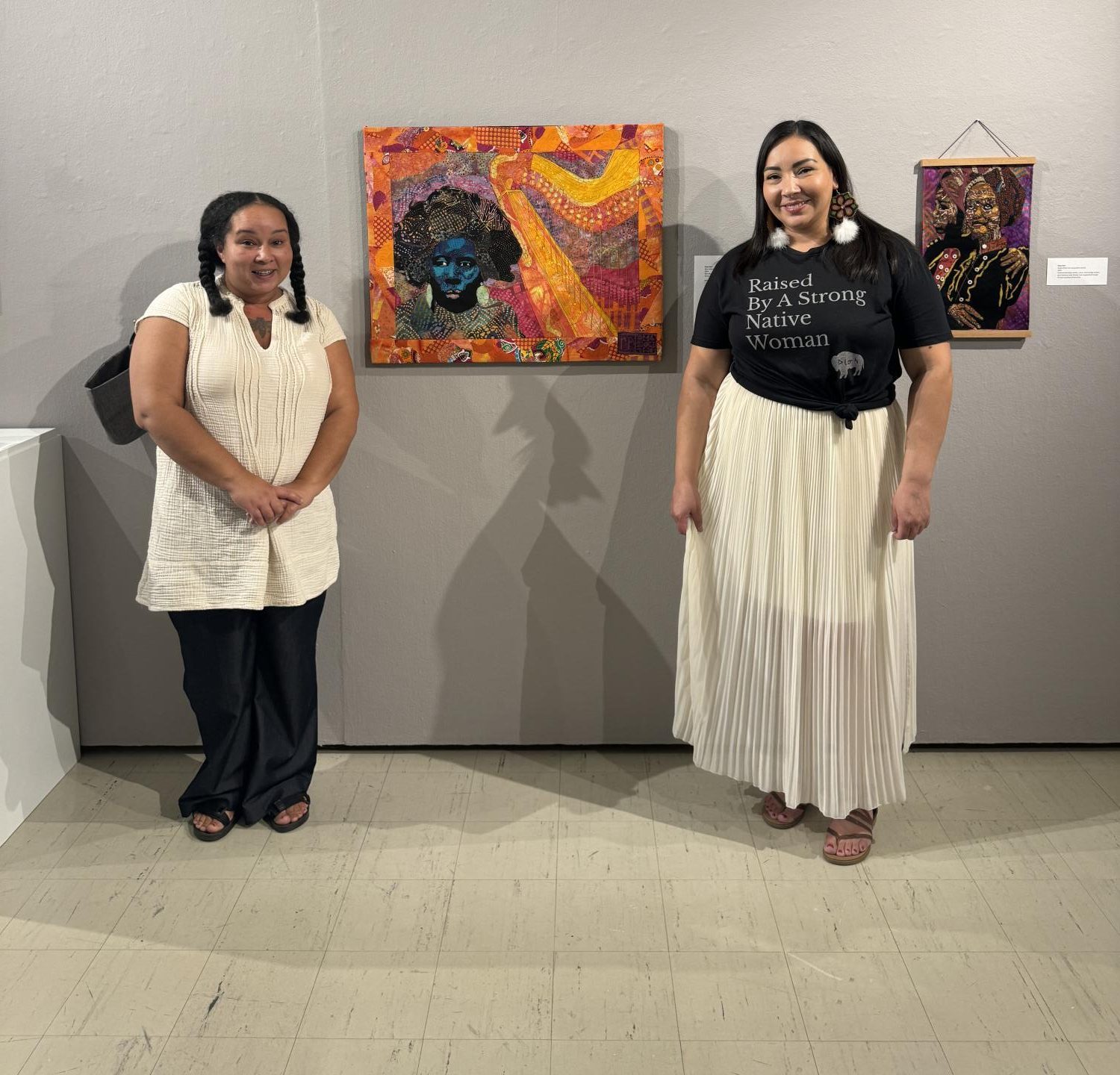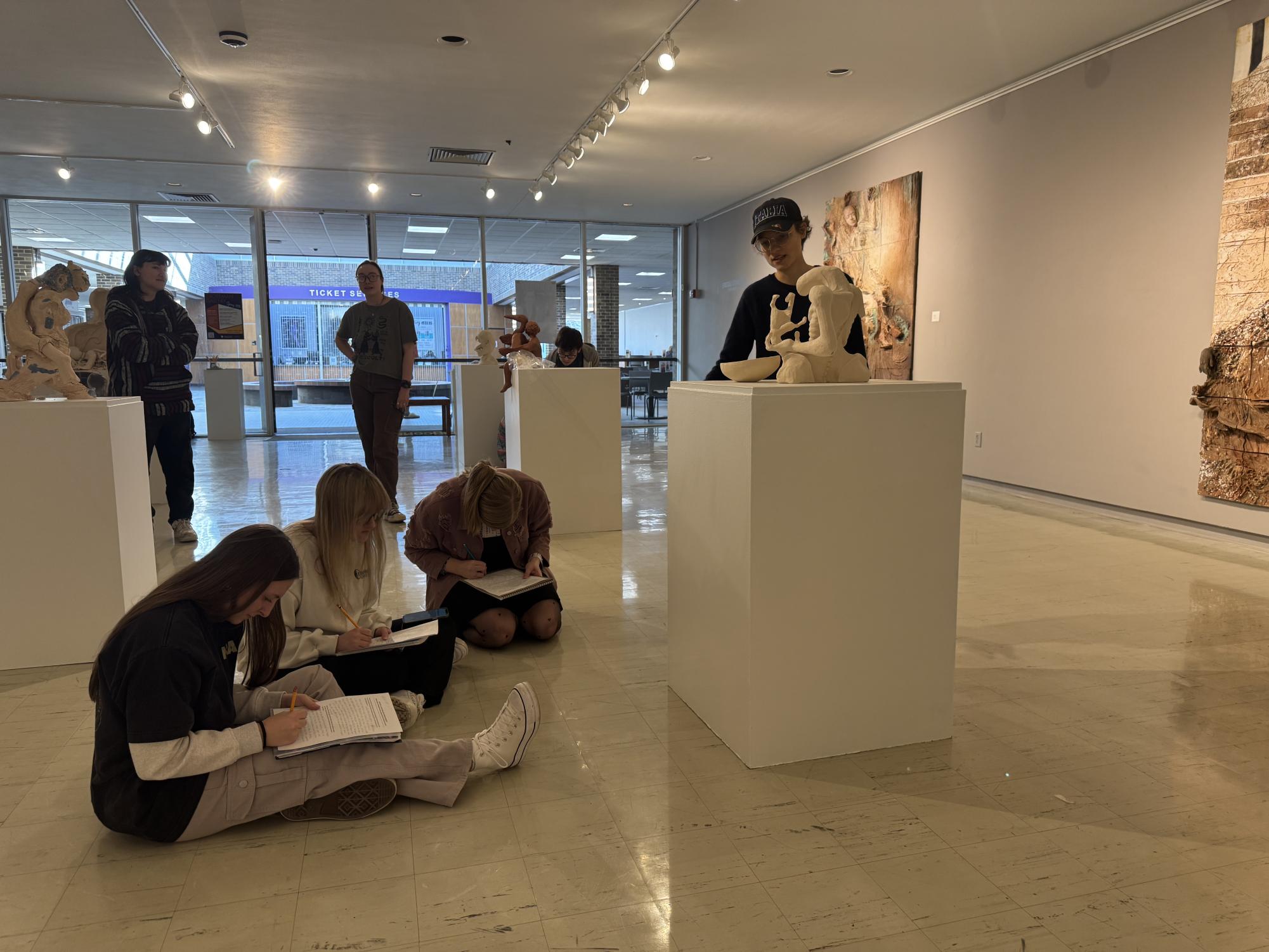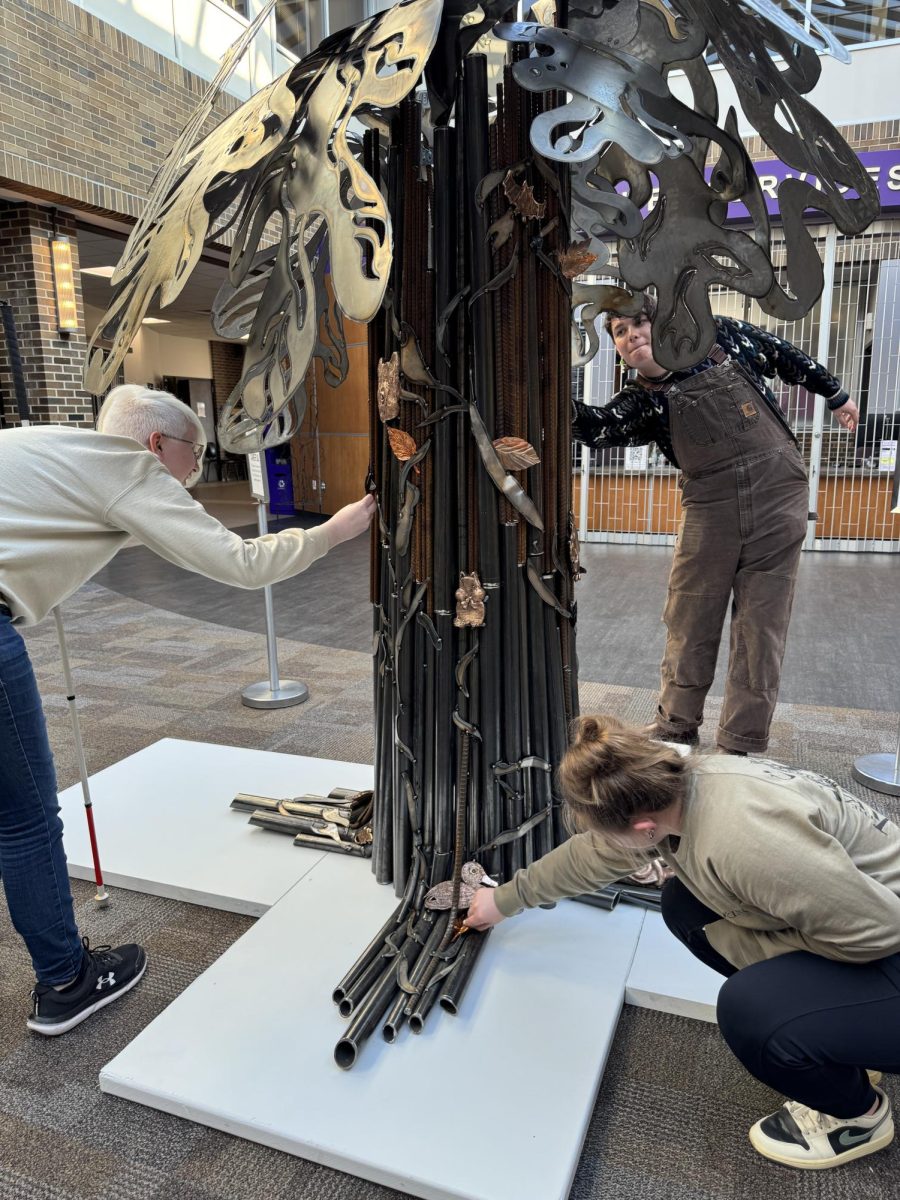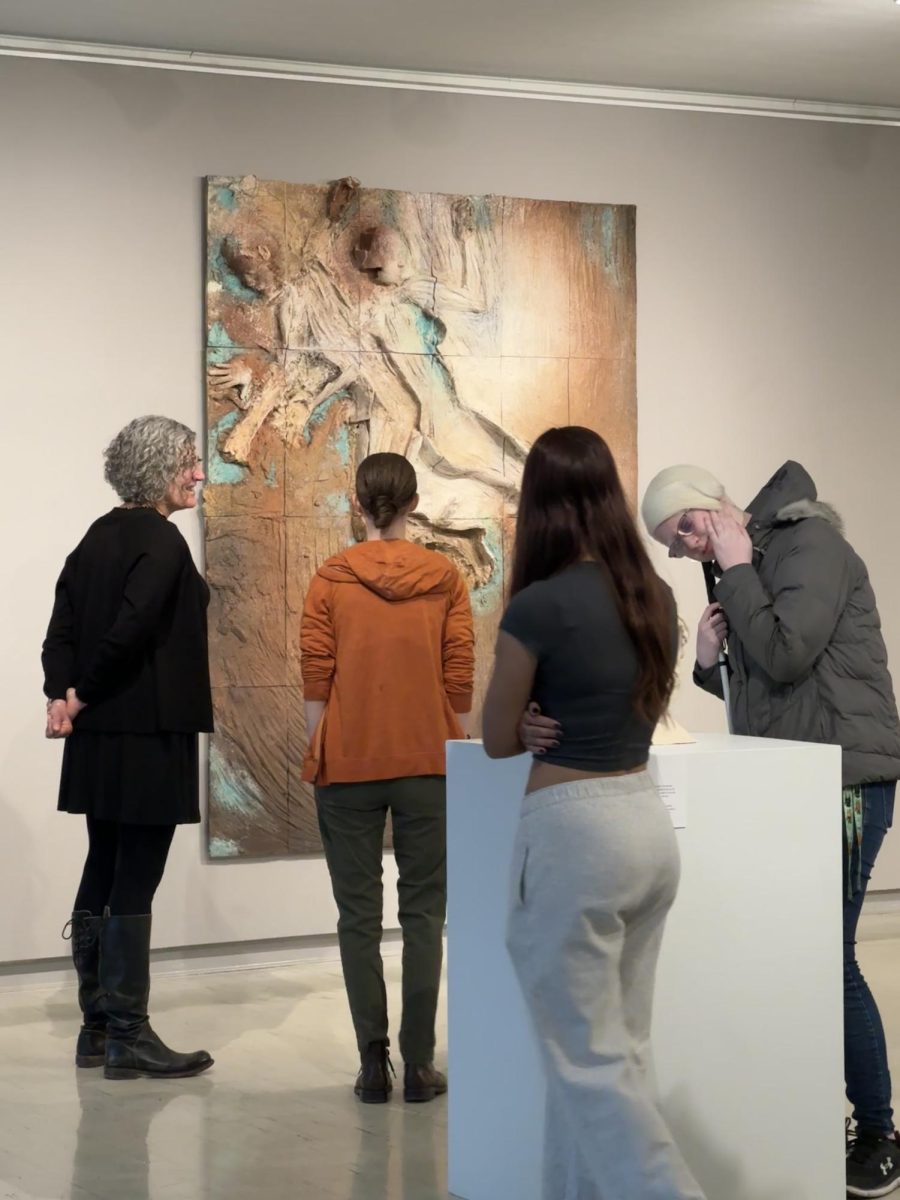When you think of the Center of the Arts, you may find that the building is most known for its music, theatre and dance. Yet, another important department lies within the building: the Department of Art and Design. This department teaches various topics such as ceramics, drawing, painting, graphic art and metalwork.
Painting
“Painters used to be the image makers in the world, who documented people/places/ideas, until the invention of the camera,” said associate professor Greg Porcaro. “The camera freed the painters from capturing ‘reality’ and allowed them to move beyond capturing the world as it’s seen, and allowed for more personal expression and experimentation.”
Porcaro grew up around art, from his maternal grandmother being a ceramist to his mother being a lifelong crafter. He was surrounded by art and soon found painting to be his calling in the art world.
“Painting is an extension of drawing (with color really),” Porcaro said. “It requires knowledge of light on form/objects and a strong understanding of the three properties of color: value, chroma and hue.”
Just like any other skill in life, the more you practice it the easier it is to perfect it to the person’s liking. Porcaro described painting to be therapeutic and relaxing. He mentioned an interesting point of how when we were children, we dabbled in art in one form or another, but it is unfortunate that as people grew older that skill would sometimes vanish. It shows that anyone is capable of doing art and it’s all about expression, there is no right or wrong, just an expressive outlet.
Ceramics
“Ceramics seduced me in high school in the late 1980s, early 1990s,” said interim chair of art and design Jared Janovec. “It has kept me interested in the discipline of ceramics up to the present day.”
Janovec’s passion for ceramics has opened a variety of possibilities as well as the growing curiosity about creating works that are sculptures or usable items such as a vase or a cup.
“One could make a painting of a still life of ceramic pottery forms, but one cannot turn a canvas or panel that is often used as a painting into a piece of ceramic pottery or ceramic sculpture,” Janovec said. “Ceramics materials can be utilized to create a ceramic painting, a ceramic print, a ceramic photographic image, a ceramic sculpture, a ceramic piece of pottery and so on and so forth.”
As an artist, he is constantly thinking about his next project. His works mainly focus on the human body, the history of humans and the curiosity

of homo sapiens. However, he frameworks his pieces on why people stay in Wisconsin when it is snowy or mosquito and tick-infested. He adds how it is a privilege and sometimes a burden to create art, a feeling that anyone no matter their field of work can relate to.
Graphic Art
“I started learning computer-based art in graduate school back in 1999,” professor Xiaohong Zhang said. “Before that, I had never even used a computer, so everything was completely new to me. I took classes in digital design and programming, and I found myself drawn to the creative potential of working with technology.”
Zhang is the only artist in her family. By the age of 15 she decided art was her path and to pursue it professionally because of her driven passion.
“Keeping a discipline like media art alive requires continuous adaptation and engagement,” Zhang said. “We must stay up to date with ever-evolving technologies, and it’s essential to bring in outside artists and scholars to introduce fresh perspectives and innovative ideas. These interactions expose students to current trends and professional practices beyond the classroom.”
Zhang teaches in the Media Arts and Game Development (MAGD) program and believes art can be accessible to learn with the help of guidance and patience.
Metalwork
“Objects made to be worn on the body or objects made for utility fall within the field of metalsmithing,” Teresa Faris said. “This means that form, function, content and materiality must be working in tandem for a piece to be successful.”
“Humans have been adorning the body since the beginning of time. Metalsmithing and jewelry are rooted in indigenous culture and inherent to survival. Objects made of metal are currency and have both perceived and inherent value.”
Faris describes being drawn to objects worn on the body, she believes the body is a walking gallery. She enjoys bringing art outside of the world both interrupting and starting a conversation.
“I compare the creative process to digging in the dirt. Introspective approaches make the most authentic work,” Faris said.
She believes art is the most authentic form of human expression and art is important because the opposite of expression is depression.
Drawing
“I love drawing. I’ve been drawing my whole life and I come back to it again and again,” said drawing lecturer Lillian Handley.
She appreciates how the art form can have a direct connection from the maker to the mark. Through drawing, you can tell how fast or slow the artists made their marks on the paper by looking at it. Drawing can help other artists by creating sketches to show their clients what they plan on making or can help a sculpture show the studio assistant what their ideas may be.

“Some people will find drawing a subject accurately, with correct proportion to be most challenging, whereas another person might find rendering skills easier and working with ideas harder,” Handley said.
Many people have different challenges to drawing, and not everyone in the field will deal with the same issue as their co-worker or elaborator and drawers may have to draw some weird concepts as well.
Importance of Crossman Gallery
“The Crossman Gallery was established in the late 1960s but has been in the Greenhill Center of the Arts since 1971 when the building was built,” said Crossman Gallery director Ashley Dimmig. “It is named for Catherine Crossman, the professor who is responsible for establishing an art major at UW-W.”
Each new academic year, the gallery showcases the thematic exhibition that showcases artwork from their permanent collection. They have their annual Juried Student Art Exhibition, and the semester ends with three short exhibitions by art and design majors. These majors include students aiming to become BFA majors, those who are BFA juniors and lastly the graduating BFA seniors. BA & BSE graduating seniors are typically combined for a show. In the spring it hosts a Youth Art Month Show and the Schuh Visiting Artists Exhibition.
“The work of organizing an exhibition begins long before the art goes up on the wall (or on a pedestal, as the case may be) — there are typically planning meetings with the artists, whether they are students or professional practicing artists,” Dimmig said. “I need to understand their vision and then align that with what is logistically possible or physically feasible in our space. We work together to develop a plan and work together to execute that plan.”
The support of the arts is very important to the art community no matter if it is physical art, music, theatre or dance. Student’s work around the Center of the Arts and the galleries (both Crossman and Roberta) are free and are open throughout the whole year. The upcoming artist for Roberta’s Gallery is Jiawei Gong, who’s exhibit will be open from May 7 to June 18. This exhibition is a collaboration between the MAGD program and Roberta’s Art Gallery. As for the Crossman Gallery, the upcoming events are the BA & BSE Senior Show, April 7-17, and the BFA Senior Exhibition, April 28 to May 8.



